Gravity casting refers to the process of injecting molten metal into the mold under the action of the gravity of the earth, also known as casting. In the broad sense, metal casting includes sand casting, permanent mold casting, investment casting, lost foam casting, low pressure die casting etc. Narrow gravity casting refers specifically to metal casting.
1. There are many methods for making metal materials into desired products, such as casting, forging, extrusion, rolling, drawing, stamping, cutting, powder metallurgy, and so on. Among them, casting is the most basic and commonly used process.
2. The molten metal is poured into a hollow mold made of a high-temperature resistant material and condensed to obtain a product of the desired shape. This is casting. The resulting product is a casting.
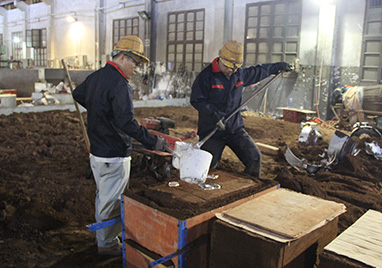
Aluminum Sand Casting
3. Casting can be divided into ferrous metal casting (including cast iron, cast steel) and non-ferrous metal casting (including aluminum alloy, copper alloy, zinc alloy, magnesium alloy, etc.) according to the material of the casting. Our factory specializes in non-ferrous metal casting, with an emphasis on aluminum casting.
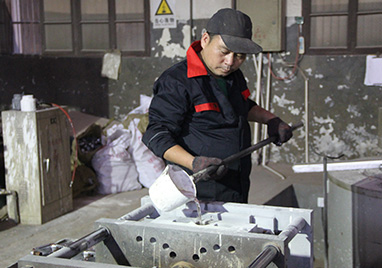
Metal Casting Process
4. Casting can be divided into sand casting and metal casting according to the material of the mold. The precision casting factory is comfortable with both of these casting processes, and designs and manufactures these two types of casting molds by itself.
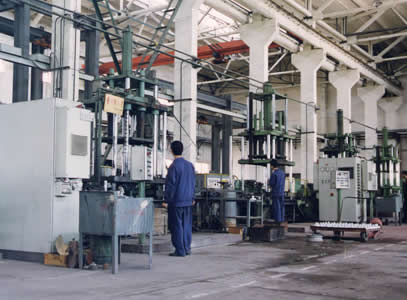
Low Pressure Die Casting workshop
5. Casting can also be divided into gravity casting and die casting according to the pouring process of molten metal. Gravity casting refers to the process of injecting molten metal into the mold under the action of the gravity of the earth, also known as casting. In the broad sense, gravity casting includes sand casting, metal casting, investment casting, lost foam casting, mud casting, etc ; narrow gravity casting refers specifically to metal casting. Pressure casting refers to a process in which a metal liquid is injected into a mold under the action of other external forces (excluding gravity). In the broad sense, die casting includes die casting and vacuum casting, low pressure casting, centrifugal casting, etc . The narrow sense of die casting refers to the metal die casting of the die casting machine, referred to as die casting. The precision casting factory has long been engaged in gravity casting of sand and metal molds. These types of casting processes are currently the most commonly used in non-ferrous metal casting, and they also have the lowest relative prices.
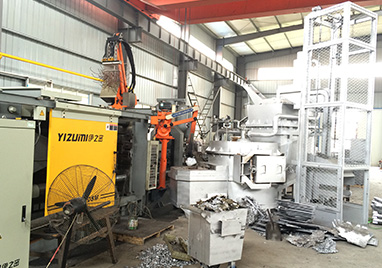
Die Casting Machine
6. Sand casting is a traditional casting process that uses sand as the main molding material to make casting molds. Sand casting generally uses gravity casting. When special requirements are required, low pressure casting and centrifugal casting can also be used. Sand casting has a wide range of adaptability. Small, large, simple, complex, single and large quantities can be used. Sand casting molds were previously made of wood, commonly known as wood molds. In order to change the shortcomings such as easy deformation and easy damage of wooden molds, Dongrun Casting Factory changed all aluminum molds or resin molds with higher dimensional accuracy and longer service life except sand castings produced in one piece. Although the price has increased, it is still much cheaper than molds for metal mold casting. In small batches and large pieces, the price advantage is particularly prominent. In addition, sand molds are more refractory than metal molds, so materials with higher melting points such as copper alloys and ferrous metals also use this process. However, sand casting has some disadvantages: because each sand casting can only be poured once, the casting is damaged after obtaining the casting, and it must be reshaped, so the production efficiency of sand casting is low; and because the overall nature of sand is soft and porous, so sand casting castings have lower dimensional accuracy and rougher surfaces. However, the precision accumulation of many years by the precision casting factory has greatly improved the surface condition of sand castings, and its effect after shot blasting is comparable to that of metal castings.
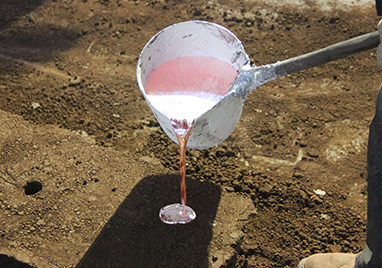
Sand Casting
7. Metal mold casting is a modern process for making hollow molds for casting with heat-resistant alloy steel. Metal molds can be gravity-cast or die-cast. The metal mold can be used repeatedly for many times. Every time the metal liquid is poured, a casting is obtained. The life is very long and the production efficiency is very high. Metal mold castings not only have good dimensional accuracy and smooth surface, but also have higher strength than sand molds in the case of pouring the same metal liquid, and are less likely to be damaged. Therefore, in the mass production of non-ferrous metal small and medium castings, as long as the melting point of the casting material is not too high, metal casting is generally preferred. However, metal casting has some disadvantages: because the heat-resistant alloy steel and the processing of hollow cavities on it are relatively expensive, the cost of metal molds is expensive, but the overall cost is lower than that of die casting molds too much. For small batch production, the cost of the mold allocated to each product is obviously too high and generally not easy to accept. And because the metal mold is limited by the size of the mold material and the capabilities of the cavity processing equipment and casting equipment, it is also powerless for particularly large castings. Therefore, in the production of small batches and large pieces, metal casting is rarely used. In addition, although the metal mold uses heat-resistant alloy steel, its heat resistance is still limited. It is generally used for the casting of aluminum alloys, zinc alloys, and magnesium alloys. The metal molds of Dongrun Casting Factory are all designed and manufactured by themselves, so they can provide customers with cheap and applicable high-quality molds in a timely manner.
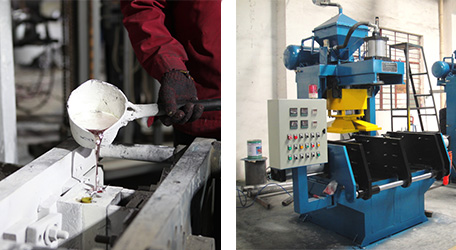
Metal Mold Casting
8. Die-casting is a metal mold pressure performed on a die-casting machine, which is the most efficient casting process at present. Die-casting machines are divided into hot-chamber die-casting machines and cold-chamber die-casting machines. Hot chamber die casting machine has high degree of automation, less material loss, and higher production efficiency than cold chamber die casting machine. However, due to the heat resistance of the machine parts, it can only be used for the production of castings of low melting point materials such as zinc alloys and magnesium alloys. . Due to its high melting point, aluminum alloy die castings widely used today can only be produced on cold chamber die casting machines. The main feature of die casting is that the metal liquid fills the cavity under high pressure and high speed, and forms and solidifies under high pressure. The disadvantage of the die casting is that because the metal liquid fills the cavity under high pressure and high speed, it is inevitable the air in the cavity is wrapped inside the casting to form subcutaneous air holes. Therefore, aluminum alloy die castings should not be heat treated, and zinc alloy die castings should not be spray-painted on the surface (but can be painted). Otherwise, the internal pores in the casting will expand when exposed to heat and cause deformation or bubbling of the casting. In addition, the mechanical cutting machining allowance of the die-casting part should also be made smaller, generally about 0.5mm, which can reduce the weight of the casting, reduce the amount of cutting machining to reduce costs, and avoid penetrating the dense surface layer, exposing subcutaneous air holes, causing the work piece is scrapped.

Casting processes
Dongrun Casting have 20000 square meters facility houses and 200 production & test equipment, From quotation and tooling design to casting and finished machining, we can work with you at every stage. We serves wide range of industries-from Fortune 500 corporations to small and midsize OEMs. Our products includes: Automotive&Trucking, Electric Utility & Communications, Metering System, Hydraulic Industry, Medical Devices, Lighting, Fuel and Gas Pressure, Furniture parts.
More Details : www.dongruncasting.com
